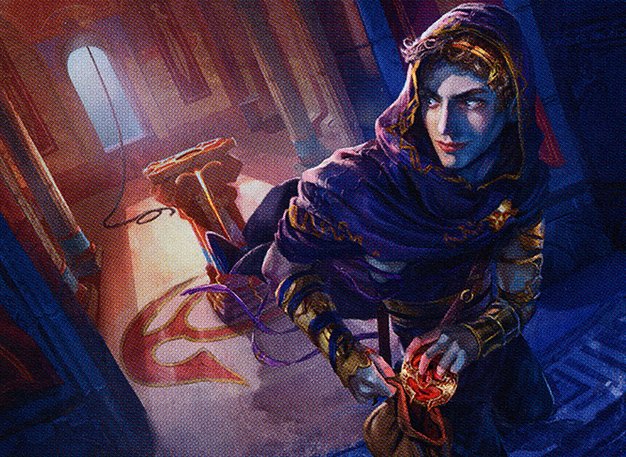This past weekend I ran The Celestial Job, a planar one-shot written by Matt and Rob of the DM of None podcast. My players and I had an absolute ball playing the adventure and I’m going to discuss in this post what worked at the table for me. Maybe reading this post and my previous post about prepping the adventure inspires you to run The Celestial Job. If so, the adventure is available for free on the DM of None homebrew page. Want to discuss running Planescape adventures with me? Find me on Mastodon: @[email protected]
My Players and their Characters
For this session I had four players. My spouse, a coworker, my coworker’s spouse, and a friend of theirs. We’re all busy middle-aged adults with professional careers who can’t make as much time as we’d like to play TTRPGs. We’re all fairly new to 5E Dungeons & Dragons, though many of us are long-time role players.
As I mentioned in my post about prepping the adventure, I made 12 premade characters for my players to pick from. I also directed the group to my DNDBeyond campaign if they wanted to build their own character using the sources I shared. No one had time to build their own character, so everyone picked from the premade ones.
Three of my players settled upon characters quickly. They chose the elf barbarian, the gnome wizard, and the returned ranger. The fourth player was having difficulty deciding. I suggested picking someone with high charisma since the other party members lacked it and they might need someone with good persuasion or deception skills. The player chose the halfling warlock.
My GM Tools at the Table
I don’t like running adventures from behind a screen, and especially not one-shots. For starters, I always roll in the open and furthermore I don’t find the material printed on most GM screens to be useful. My thoughts on GM screens are a topic for another post, so let’s leave it there.
At the table I had a stack of index cards. One card for each scene. On the cards I noted NPCs or combats from the scene. I also wrote scene goals. For instance, on the Ms. Oceanus makes an offer card I wrote that Ms. Oceanus was the NPC in the scene (duh) and the scene goals were to explain planar portals, make the offer, and lie to the party. I’d take notes on these index cards as needed.
I also had printouts of the monster stats from the adventure. I didn’t want to look these up on a device since I would use them in combat, and I wanted no slowdowns. Speaking of devices, I had a tablet with me with DNDBeyond for looking up spells and abilities. I also showed artwork to the group with the tablet.
Putting the party together
In my session prep I decided to ask the players each a question that would build the party’s backstory. I wrote each question on a 3×5 index card and made noted the answers on it.
The party came up with a fun tale of saving a town from kobolds, then sinking all their gold into publishing a comprehensive ethnographic survey of kobold society for which they used dubious secondhand sources provided by the warlock. The party’s reputation was ruined, and their book didn’t sell. Now destitute, but held together in solidarity, the party got the job offer. I dropped a printed copy of Ms. Oceanus’s letter on the table. After they read it, I asked my final question from my prep. The player I asked didn’t quite understand the question and I had to rephrase the question. I should have replaced that question with something clearer or connected to the party’s story.
Introducing the Party to Sigil
After the team got their initial job offer and trinkets from Ms. Oceanus, they headed out into the streets of Sigil. Once outside the building, I had everyone roll a CON save, the lowest roll losing their lunch as their eyes tracked the street rise and loop overhead. I wanted an interactive way to provide some exposition instead of just talking at my players.
Darrith came along to provide more information about Sigil. They spotted Amaris right away and, deciding he was a threat, went to confront him. I played Amaris as a caricature of a slick lawyer giving a free consultation. The magic item cards that I prepared really went over well here. My players passed around the cards and chatted about them while I took a quick break and refilled my drink.
I wanted the party operating with a complete set of facts early in the adventure, so I had Amaris tell the party Ms. Oceanus worked for the Lady of Pain and described her interest in–and dubious claim to ownership of–the lotus. I did not have Amaris tell them the lotus was someone’s soul. They would learn that in Mount Celestia.
Overall, I think we spent too much time in Sigil talking to Amaris and especially to Darrith. But that’s okay because in my prep I identified scenes to cut for this contingency.
Onward to the Upper Planes
The party arrived at the gates of Mount Celestia. They talked with the two groups of monks briefly and I made sure to drop the name of the enlightened master whose soul is held in the lotus. I must have played the monks too boring because the party quickly moved on without getting as much information as they could. One of the hosts of DM of None mentioned the same thing happening to his group. If you run this adventure and want the party to learn something from the monks, make sure to play them up.
The party talked their way past the gatekeeper by promising that they would deal with the fungal infection. However, the party had neglected to ask anyone where the lotus was held. They cast some spells and located the Acropolis of Ineradicable Thought.
As I had prepared, I stepped on the gas here to make up for lost time. I quickly narrated them through rolling hills and manicured topiary to get them to the fungus blight. They dispatched the dretches and learned a bit about the demonic fungus.
Once at the Acropolis, they met the docent. After the party exhausted their short list of questions about the lotus they were set to go. I gave them a bit of fun by having the docent say, “are you sure you’ve asked everything you’d like to know? I know everything. For instance, would you like to know if your parents loved you?” The gnome wizard would have kept talking with the docent forever if the other members of the party hadn’t dragged her away.
I kept the Scales of Truth puzzle, but I should have cut it or at the very least have given them a strong clue from the docent. Sure enough, the table grew silent and then started debating what they might sacrifice to open the door. After a while my spouse’s character took action. She grabbed a bag of gold and started throwing coins one by one onto the pan of the scale.
I wanted to move the scene on, and really any sacrifice would work for the puzzle, so I rolled some dice. Fifty-seven coins later the passage opened.
Climactic Encounter in the Lotus Grotto
The party passed the node of corruption and beckoning demonic voice like they were ignoring a panhandler. They hadn’t yet decided if they were going to take the lotus, but they knew they weren’t giving it to the fungus demons.
Speaking of that, half the party advocated for leaving the lotus in place. It would have been an anti-climactic ending, but not an unreasonable one. While the party traversed Mount Celestia, I showed parishioners from around the multiverse meditating or praying at monuments which contained the souls of enlightened thinkers.
The party finally decided to steal the lotus for themselves while in the grotto. They came up with a pretty clever plan that ended up going sideways. The wizard cast unseen servant to pick the flower and make off with it while the warlock cast silent image to create a facsimile lotus in its place. I gave the guardians disadvantage on their perception checks but they still spotted the ruse. The frog ended up pouncing on the unseen servant and swallowing the lotus!
For the combat, I kept the celestial frog the same but toned down the monks. My players are new to 5E and don’t know how to use their characters to the absolute max in combat. The monks I dropped to half HP and gave them only a single attack per round except for the bare fisted one who got two.
The combat was pretty fun, but I could have made it more dynamic. I should have moved the enemies around a lot to provoke opportunity attacks. It gives players something to do on their off turns. Mike Shea of Sly Flourish always recommends GMs move their monsters whenever GMs ask how to make their combats dynamic.
After the frog fell and they retrieved the lotus, I announced that what happened next was entirely up to them. I had the party narrate the ending. Maybe I should have prepared another question for each party member as I had for the introduction to make sure everyone contributed to the ending.
All in all, the session was great. Everyone was talking excitedly about the adventure as we wrapped up and saw our guests out. My next step is to pin down a regular time slot in the week so we can run a campaign.
If I was to take just one lesson from this session it would be that I don’t need a written adventure in front of me to run it. The stack of note cards with scenes and NPCs worked great.
Planescape is a great setting for one-shot adventures. It’s weird and malleable. I think I’ll recast another DM of None one-shot adventure, Dice Hard, to take place in Sigil. Let’s make that happen this Christmas… If you’d like to chat about one-shot adventures or the upcoming Planescape box set, message me on Mastodon @[email protected]
Feature Image “Temple Thief” by Evyn Fong copyright 2020 Wizards of the Coast

